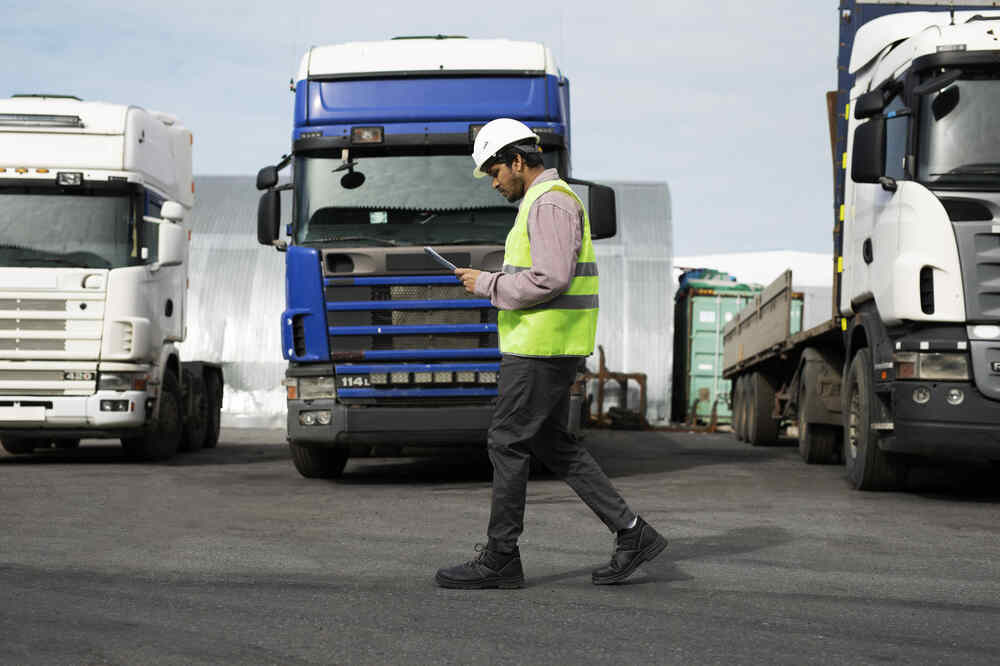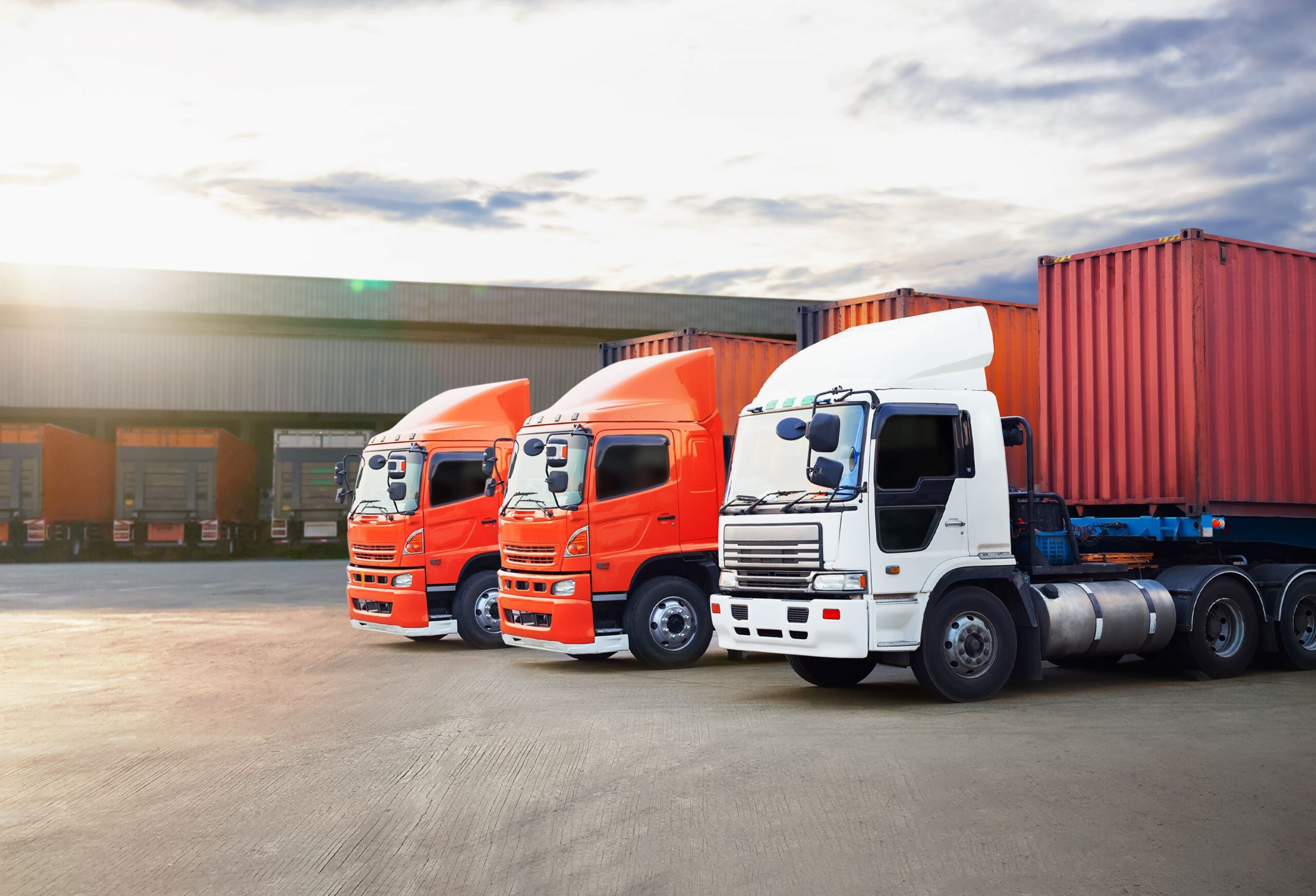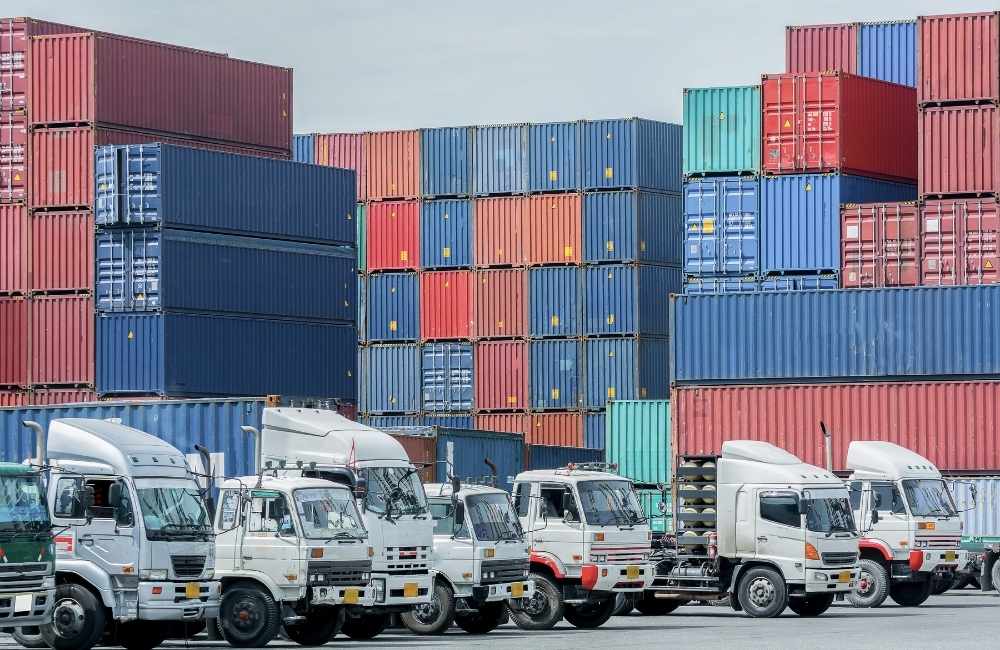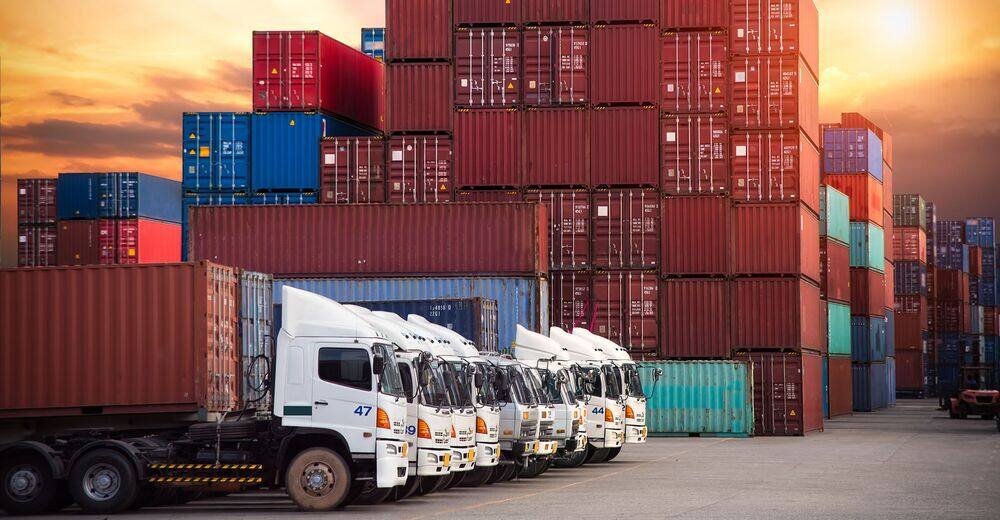Drayage trucking plays a vital role in the smooth movement of goods within intermodal transportation systems. It serves as the essential link that connects shipping containers between ports, rail yards, and final delivery points. Without it, even the most advanced logistics networks would face delays and disruptions.
Here are five insights into how truck drayage is used in intermodal transportation.
Table of Contents
Key Takeaways✔ Drayage trucking plays a vital role in linking ports, rail terminals, and warehouses in intermodal transportation. ✔ Reliable drayage helps reduce port congestion and avoid demurrage and detention fees. ✔ Container drayage supports e-commerce by speeding up inventory flow and meeting tight delivery timelines. ✔ Tracking drayage in real time improves shipment visibility and reduces costly delays. ✔ Trusted drayage providers must have port access credentials, equipment, and local expertise. ✔ Drayage Company By Best offers dependable service near the Port of New York and New Jersey. ✔ Choosing the right drayage partner ensures smooth, efficient intermodal freight movement. |

How is Truck Drayage Used in Intermodal Transportation?
1. Short-Haul Container Transfer Between Port and Rail Terminal
Truck drayage plays a crucial role at the start of many intermodal journeys by transporting containers short distances from seaports to nearby rail terminals. By minimizing port dwell time and maintaining schedule efficiency, it becomes clear how truck drayage is used in intermodal transportation to connect shipping modes seamlessly and support supply chain flow.
How Drayage Connects Ports to the Rail System
- Relieves Port Congestion: Ports often have limited space and high container traffic. Drayage trucks quickly move containers off the docks to free up space for incoming cargo.
- Ensures Timely Rail Departure: Trains operate on tight schedules, and delays at ports can throw off rail logistics. Drayage services help align container delivery with departure windows.
- Reduces Storage Costs: Leaving containers at ports too long leads to demurrage charges. Drayage helps avoid these fees by moving cargo to rail yards or holding areas efficiently.
2. Transport Between Rail Yards and Distribution Centers
Once containers arrive at rail terminals, drayage trucks take over again to deliver freight to regional warehouses or distribution hubs. This handoff marks the final leg of the intermodal chain before goods are sorted and sent to retailers or customers. It’s a fast, controlled method that ensures products stay on track for delivery.
How Drayage Plays a Key Role After Rail
- Matches Delivery Schedules: Distribution centers run on tight inventory timelines. Drayage trucking fills the timing gaps between rail arrivals and warehouse intake windows.
- Handles Local Navigation Challenges: Large containers can’t always go directly to the final stop via rail. Drayage trucks manage short hauls through industrial areas and roads not designed for long-haul rigs.
- Supports Cross-Docking Operations: Many distribution centers use cross-docking to move products directly from inbound to outbound trucks. Drayage ensures those inbound containers arrive exactly when needed.
3. Temporary Storage and Container Staging
Drayage also supports temporary staging when containers can’t move directly from one mode to another. This use is common when shipments arrive early or terminals aren’t ready to receive them. Drayage providers move and hold these containers at off-site yards or container depots until the next leg of the journey is scheduled.
How Staging Adds Flexibility to Intermodal Flow
- Buffers Timing Gaps: Sometimes ships arrive earlier than trains can depart. Drayage trucks shift containers to temporary storage to prevent backlog at the port or terminal.
- Manages Missed Connections: When a container misses its scheduled rail slot, drayage offers a stopgap solution. The cargo is held securely until a new window becomes available.
- Reduces Port Dwell Time: By removing containers early and storing them elsewhere, drayage helps reduce the time containers sit idle at high-traffic terminals.
4. Repositioning Empty Containers Within the Network
Drayage also plays a major role in repositioning empty containers across the intermodal network. Once freight is delivered, the empty container often needs to be returned to a port, rail yard, or another customer for reuse. This repositioning process keeps container assets circulating efficiently and supports global supply chain flow.

Why Empty Moves Are Essential for Intermodal Transport
- Supports Export Scheduling: Exporters rely on a steady supply of empty containers. Drayage companies move empties back to ports or exporters quickly so they’re ready for outbound shipments.
- Prevents Equipment Shortages: When containers are left at random sites, the whole network feels the strain. Drayage helps redistribute assets to where they’re most needed.
- Improves Asset Utilization: Every idle container represents lost revenue. Drayage maximizes container use by ensuring they’re always in circulation, not parked in a yard unused.
5. Facilitating Intermodal Transfers at Inland Ports
Inland ports, located away from traditional coastal hubs, depend on drayage to connect rail service to regional manufacturers, warehouses, and trucking terminals. These facilities extend the reach of intermodal transport deep into the interior, often saving shippers time and cost compared to congested coastal routes.
How Inland Drayage Extends Intermodal Reach
- Links Local Markets to Rail Lines: Inland ports aren’t usually located next to rail tracks. Drayage bridges this distance so local freight can access national and global markets.
- Increases Intermodal Access: Smaller shippers benefit from these inland connections. Drayage services make it possible for them to join intermodal networks without needing direct rail access.
Improves Traffic Efficiency: Coastal areas suffer from congestion and high operating costs. Inland drayage helps reroute some of that traffic inland, easing the burden on coastal terminals.
How Container Drayage Supports E-Commerce Fulfillment Networks
As e-commerce demand continues to grow, fulfillment networks rely heavily on fast, efficient intermodal transportation. Container drayage serves as the connecting piece between ports, rail yards, and last-mile delivery hubs—making it vital for companies aiming to meet rapid order timelines.
Understanding how truck drayage is used in intermodal transportation reveals just how critical it is for maintaining the pace and precision modern e-commerce operations require. This is more crucial today, as global retail e-commerce—valued at $4.29 trillion in 2020—continues to grow rapidly.
1. Speeds Up Inventory Replenishment at Fulfillment Centers
Drayage moves containers from ports and rail terminals directly to e-commerce warehouses. This short-haul transport ensures that inventory gets restocked quickly, minimizing out-of-stock issues. Working with experienced providers—especially those who specialize in container truck drayage—can prevent delays and streamline fulfillment. How is truck drayage used in intermodal transportation becomes clear when considering its role in connecting major transport hubs to final distribution points.
2. Connects Coastal Entry Points to Inland Demand Zones
Many e-commerce companies import goods through major ports but serve customers far inland. Drayage companies bridge the gap between port facilities and rail lines that reach central distribution zones. That’s one reason why it’s important to ask, where can I find reliable truck drayage services near major ports?
3. Reduces Storage Costs and Demurrage Fees
When containers linger at the port due to poor planning, businesses face steep demurrage and storage charges. A reliable drayage partner helps schedule pickups precisely, keeping freight moving and avoiding extra fees. Drayage specialists understand terminal requirements and can react quickly when schedules change.
4. Supports High-Volume Parcel Sortation Operations
Large-scale e-commerce fulfillment centers depend on predictable container arrivals to keep sortation lines running. Drayage trucking ensures that inbound shipments arrive in a steady, manageable flow. Providers who know how truck drayage is used in intermodal transportation can time deliveries to avoid bottlenecks or downtime.
5. Enables Flexible Multichannel Distribution
E-commerce sellers often use both owned and third-party fulfillment centers. Drayage services support flexible routing—moving containers to different hubs based on real-time sales data or stock levels. This flexibility is only possible when working with professionals who specialize in container truck drayage and can adapt quickly.
6. Helps Scale Seasonal and Promotional Surges
Flash sales, holiday seasons, and new product launches all require sudden increases in shipping volume. Drayage companies help scale operations by moving larger numbers of containers from ports or ramps to staging areas on short notice. Businesses asking where can I find reliable truck drayage services near major ports should look for partners with extra capacity during peak periods.

How to Track and Monitor Container Drayage in Real Time
Real-time visibility has become a must-have in intermodal logistics—especially for container drayage. Shippers and freight managers need accurate updates on container status, location, and delivery timing to avoid costly delays and keep supply chains on track. Knowing how to track these short but critical moves can make all the difference in meeting delivery deadlines and reducing unnecessary costs.
1. Use GPS-Equipped Drayage Fleets
Many professional drayage companies equip their trucks with GPS tracking systems. This allows shippers to monitor container movements from pickup at the port to delivery at a warehouse or rail yard. Real-time updates reduce guesswork and give dispatchers the data needed to make fast, informed decisions.
2. Integrate Transportation Management Systems (TMS)
A strong TMS platform centralizes tracking, communication, and performance data in one place. Shippers can view estimated arrival times, route progress, and load status without calling the carrier. When connected with a drayage provider’s system, it offers complete transparency across intermodal moves.
3. Set Up Geofencing Alerts at Key Locations
Geofencing creates virtual boundaries around ports, container yards, and delivery sites. When a truck enters or leaves these zones, the system sends automatic notifications to the logistics team. This helps verify container pickup and drop-off times and ensures alignment with gate appointments or rail schedules.
4. Work With Drayage Providers Who Offer Digital Load Visibility
Not all drayage carriers offer the same level of tech integration. Working with providers who specialize in container truck drayage and offer load visibility platforms can eliminate blind spots in the process. These systems help answer how truck drayage is used in intermodal transportation with more clarity—by turning short hauls into fully traceable, reportable moves.

Where Can I Find Reliable Truck Drayage Services Near Major Ports?
The global drayage services market is projected to grow by USD 2.46 billion from 2025 to 2029, underscoring the rising demand for reliable short-haul trucking solutions. For shippers moving freight through busy ports, dependable drayage partners are essential to navigating tight schedules, equipment constraints, and regulatory hurdles. The right provider can minimize delays, cut storage costs, and maintain fluid movement across intermodal systems.
To get started, here are six practical places to find dependable truck drayage services near major ports:
1. Search Port Authority Directories
Many major ports maintain online directories of approved or registered drayage carriers. For example, the Port of Los Angeles and Port of Long Beach offer searchable databases of licensed drayage firms with TWIC-cleared drivers and active SCAC codes. These lists help ensure that companies have access credentials and meet local operational standards.
2. Use Third-Party Logistics (3PL) Networks
3PL companies often have vetted drayage carriers in their national or regional networks. These partners have already been evaluated for insurance, performance, and availability near high-traffic ports like Savannah, Houston, or New York/New Jersey. Working through a 3PL adds a layer of accountability and simplifies coordination with rail and ocean schedules.
3. Explore Freight Matching Platforms
Digital freight platforms like LoadMatch, DrayNow, or DAT offer tools to locate drayage providers by port region. These platforms let users filter by location, equipment type, availability, and carrier rating. Many also include real-time updates and digital paperwork to speed up booking and reduce administrative work.
4. Ask Terminal Operators or Rail Ramps for Recommendations
Terminal staff and rail yard operators work closely with drayage carriers and often know who performs consistently. Ports like Seattle-Tacoma or Norfolk have gate teams who interact with drivers daily and may suggest carriers who are dependable and punctual. These on-the-ground referrals are especially useful when setting up drayage for the first time.
5. Connect Through Local Trade Associations
Regional logistics associations often host directories or events where shippers can meet reputable drayage providers. Groups like the Harbor Trucking Association (HTA) in Southern California or the Intermodal Association of North America (IANA) provide access to member companies near major port hubs. These organizations vet participants and promote industry best practices.
6. Reach Out to Port-Based Warehousing Operators
Warehouse and cross-dock operators located within a few miles of major ports often partner with drayage companies for container transport. Facilities near ports in Miami, Oakland, or Charleston usually work with a small group of trusted carriers. Asking these operators for referrals can connect shippers with experienced, locally established drayage providers.
What Companies Specialize in Container Truck Drayage?
Several logistics providers across the U.S. specialize in container truck drayage, offering reliable transport between ports, rail yards, and distribution centers. These companies typically focus on short-haul container moves, time-sensitive deliveries, and coordination within intermodal systems.
One standout option is Drayage Company By Best, which operates near the Port of New York and New Jersey and serves the greater New York City region with experienced drivers and dedicated fleet support. Our team focuses on fast container turnarounds, port compliance, and responsive service for shippers and freight brokers alike.
Frequently Asked Questions (FAQs)
Drayage trucks commonly move 20-foot and 40-foot intermodal containers used for international and domestic shipping. These containers often carry consumer goods, industrial materials, or time-sensitive freight. Understanding how is truck drayage used in intermodal transportation helps ensure the right equipment is matched to the container type.
Yes, some drayage companies are certified to handle hazardous materials, provided they meet DOT and EPA regulations. These providers use drivers trained in hazmat transport and trucks equipped with proper signage and safety systems. When asking what companies specialize in container truck drayage, it’s important to confirm hazmat capabilities if needed.
Many reliable drayage carriers offer extended or 24/7 service to meet port appointment times and avoid delays. This flexibility is especially useful for weekend vessel arrivals or early morning rail slots. Those searching where can I find reliable truck drayage services near major ports should ask about after-hours availability.
Severe weather, especially at coastal ports, can delay drayage operations due to terminal closures, road restrictions, or safety concerns. Professional carriers closely monitor weather patterns and adjust schedules to minimize disruptions. A deep understanding of how is truck drayage used in intermodal transportation allows providers to build in buffers during risky seasons.
Yes, drayage is often used to move containers across borders, such as between the U.S. and Canada or Mexico. These moves require customs documentation and carriers familiar with international procedures. When evaluating what companies specialize in container truck drayage, look for those with cross-border experience and bonded carrier status.

Move Freight Smarter with Drayage Company By Best in NYC
When time and precision matter, Drayage Company By Best delivers trusted container truck drayage across New York City. With a fleet built for intermodal efficiency and a team that knows the ins and outs of port logistics, we keep freight moving smoothly from ship to rail to warehouse. Whether coordinating tight pickup windows or avoiding costly storage fees, we specialize in reliable, on-time service tailored to modern supply chain demands.
Partner with Drayage Company By Best and move smarter—every container, every mile.

